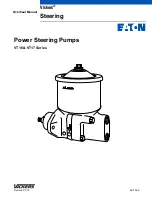
9
model no. 058-9372-4 | contact us 1-888-670-6682
•
Always ensure that the user is free of medical problems. Persons who
use vibrating tools regularly or for an extended period shou
ld first b
e
examined by a doctor, and then have regular medical check-ups to
ensure medical problems are not being caused or worsened from use.
•
Do not allow a pregnant woman or person with improper blood
circulation of the hand, history of hand injury, nervous system
disorder, diabetes, or Raynaud's disease
to operate the vibrating tool.
•
Seek medical advice immediately if you feel any vibration-related
symptoms such as tingling, numbness, and white or bl
ue fi
ngers.
• Do n
ot smoke while using the vibrating tool to avoid the risk of
vibration-related injury.
• Use a
ppropriate gloves to reduce the vibration effects on the hands.
• Use t
ools with the lowest vibration when there is a choice.
• Do n
ot perform vibration-related work continuously.
• Hold the v
ibrating tool gently and safely. Grip the tool lightly and let it
perform the work, while keeping control of it.
• Sto
p the tool immediately if abnormal vibration occurs.
VIBRATION PRECAUTION!
Potential hazard that could result in serious injury or loss
of life.
• Read and follow the safety instructions before using the
vibrating tool to avoid temporary or permanent physical
injury, particularly to the hands, arms, and shoulders, and
to reduce the risk of vibration-related injury.
• Always ensure that the tool has stopped before connecting th
e tool to
the air supply.
• Do not wear watches, rings, bracelets, or l
oose clothing when using
any air-powered tool.
• Maintain proper footing at all times in order to ensure co
rrect
balance. Make sure the floor is not slippery and wear non-slip shoes.
• Do not overload the tool. Allow the tool to o
perate at its optimum
speed for maximum efficiency
.
• Do not use a tool that is leaking air, with
missing or damaged parts,
or that requires repairs. Verify that all screws are securely tightened.
• For optimal safety and tool performance, i
nspect the tool daily in
order to ensure free movement of the trigger, safety mechanisms, and
springs.
• Always keep your air tool clean and lubricated.
Daily lubrication is
essential to avoid internal corrosion and possible failure.
• Keep the work area clean. A cluttered or d
irty workbench may lead to
an accident. Floors should be kept clear.
• Use the tool only in a well-ventilated area
.
• Handling and storage of oil: Use with adequate vent
ilation. Avoid
contact of oil with eyes, skin, and clothing. Avoid breathing spray or
mist. Store in a tightly closed container in a cool, dry, well-ventilated
area free from incompatible substances.
• Do not use the tool near or below the freez
ing point, as doing so may
cause tool failure.
• Do not store the tool in a freezing environment to prevent i
ce
formation on the operating valves of the tool, as doing so may cause
tool failure.
Disconnect tool from the air supply and turn off
the compressor
before performing any maintenance
or changing accessories, when the tool is not in use,
when it is being handed to another person, and
when it is left unattended. Failure to comply may
result in injury or damage to equipment.
Use safety goggles and ear protection:
Wear safety glasses with side shields when
operating the tool/compressor and verify that
others in the work area are also wearing safety
glasses. Safety glasses must provide. protection
from flying particles from the front and the sides.
Air-powered tools are loud and the sound can
cause hearing damage. Always wear ear protection
to prevent hearing damage and loss.
Failure to comply may result in injury.
8
CAUTION!
Potential hazard that may result in moderate injury
or damage to equipment.
NOTE:
Recycle unwanted materials rather than disposing of
them as waste. Sort tools, hoses, and packaging in specific
categories and take to the local recycling centre or dispose of
them in an environmentally safe way.
• Always wear hearing protection when usi
ng the air compressor.
Failure to do so may result in hearing loss.
• Do not carry the compressor while it is ru
nning.
• Do not operate the compressor if it is not
in a stable position.
• Do not operate the compressor on a roofto
p or in an elevated
position that could allow the unit to fall or be tipped over.
TM































